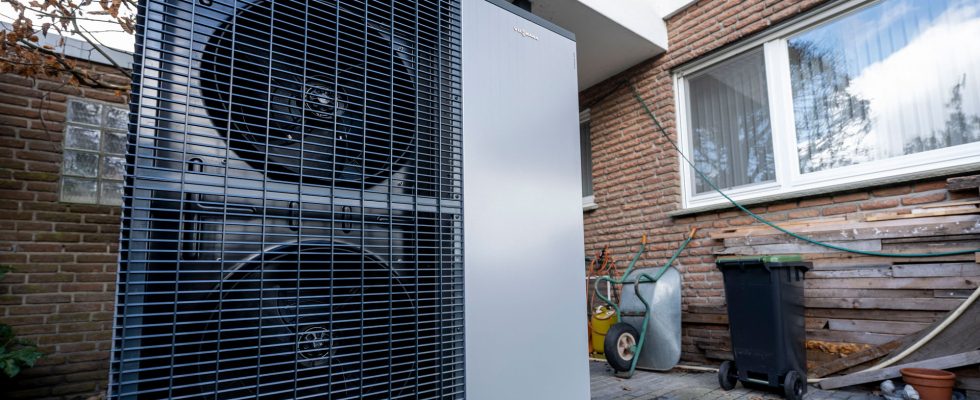Status: 04/15/2023 10:52 a.m
Many homeowners want to replace their old heaters. However, the currently popular heat pumps are not suitable for all houses. What alternatives are there and how worthwhile are they?
A year ago, Wolfgang Winkler made a decision: He wants to convert his house near Leipzig to renewable energies. “The goal was to do justice to the zeitgeist and to face the challenge that our world cannot go on like this. We have to do something,” he says.
A little later he has solar cells on the roof. Things should continue in the basement, the gas heating, built in 1996, should go. Winkler opts for a new heat pump.
Long waiting times and delivery problems
It is therefore very much in vogue, more and more homeowners are voluntarily switching to renewable energies and replacing their gas heating systems with heat pumps. According to the industry association, around 350,000 heat pumps are to be installed this year, 50 percent more than in the previous year.
However, there are also delivery problems, as Winkler found out. He waited 18 months for the heat pump he had ordered. Due to delivery bottlenecks, it was only delivered in November.
Gas heating experiences a late renaissance
But although – or precisely because – the federal government introduced the ban on new gas heating systems from 2024, gas heating is experiencing a late renaissance. Some customers would like to have their old gas heaters replaced quickly before the ban comes into force.
Heating installers like Jens Bochnig from Leipzig report increased demand, but are still skeptical about the development: “I think the ban is a little counterproductive because many heating systems will now be changed by the end of the year.”
But would it even be worth switching to heat pumps?
Cost comparison: gas boiler vs. heat pump
The calculation for a 20-year-old example house shows a direct comparison: A new gas boiler costs around 12,000 euros, plus around 1500 euros per year for gas. This corresponds to 2100 euros per year for 20 years of use.
In comparison, a heat pump for the same example house costs around 25,000 euros, plus around 1250 euros per year for electricity, for a total of 2500 euros per year. However, experts expect that gas costs could continue to rise in the future.
However, millions of houses in Germany are even older. For a heat pump to make sense, they would have to be insulated for a lot of money. Energy expert Lamia Messari-Becker from the University of Siegen therefore emphasizes the need for various technologies such as district heating, biogas, biomass and geothermal energy, both for individual buildings and for districts.
Diverse alternatives to gas heating
The village of Schlöben in Thuringia, for example, shows that it doesn’t have to be a heat pump, where biogas-based village heating is used. Energy generation begins in the barn. Biogas is generated from liquid manure and manure, and two combined heat and power plants convert it into electricity and heat.
The electricity is sold and thus the heat is subsidized. This is temporarily stored here and then distributed in the village via a local heating network. Almost everyone is connected, 600 people, plus a kindergarten, school and company.
The plant cost six million euros. The costs are only passed on to the consumption fees, 9.5 cents per kilowatt hour. Calculated for the example house, that would be 1200 euros per year – cheaper than gas heating or a heat pump.
Sweden: Role model for district heating and CO2 tax
If more people were connected to local or district heating, fewer homeowners would need to purchase expensive heat pumps. In Sweden, for example, things have come a long way: 57 percent of households are connected to district heating. Gas, oil and coal provide only three percent of the heat.
An example is David Bauner from Stockholm, whose house is heated with geothermal energy. A CO2 tax has been levied on emissions from fossil fuels in Sweden since 1991. “I think that’s very fair. The CO2 tax was raised twice and the income tax was lowered both times. So you took with one hand and gave with the other,” says the homeowner from Stockholm.
Rather few options in Germany
Heat pumps are also popular in the north. Finland, Norway and Sweden have the most per 100,000 inhabitants – the UK has the fewest. Germany is second to last, ahead of Belgium.
The acceptance of climate protection is also high in this country, says Messari-Becker from the University of Siegen. “What goes down badly with people is when the pace is so high but the options aren’t made possible.” So if you ban something now, you should already have the offers at the same time. “Then people would also go along with it,” emphasizes Messari-Becker.

